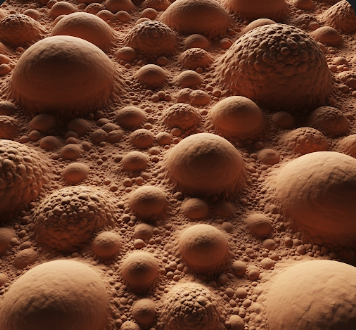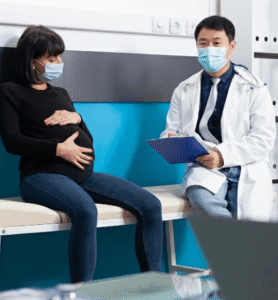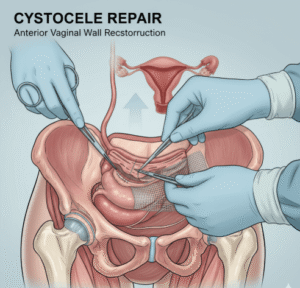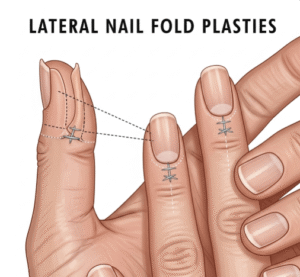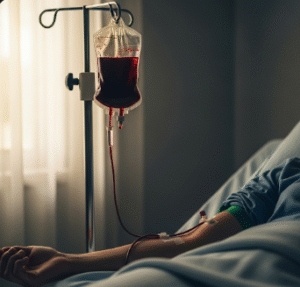Overview
Bumps on the skin are raised areas that can appear anywhere on the body and result from a wide range of causes, from minor injuries to infections, allergic reactions, or underlying medical conditions. While most bumps are benign and temporary, some may indicate more serious health issues that require medical attention.
In Korea, skin bumps are commonly evaluated in dermatology clinics using advanced diagnostic techniques such as dermoscopy, biopsy, and imaging. Korean dermatologists emphasize accurate diagnosis, effective treatment, and preventive strategies to manage both cosmetic and health-related concerns associated with bumps.
What are Bumps?
Bumps are small elevations or lumps on the skin that vary in size, texture, color, and underlying cause. They may be:
- Firm or soft
- Red, pink, or skin-colored
- Painful, itchy, or asymptomatic
- Single or multiple
Common types of bumps include papules, nodules, cysts, warts, insect bites, and dermatofibromas. The appearance and behavior of a bump often provide clues to its cause.
Symptoms
Symptoms of bumps depend on the underlying cause, but general features include:
- Visible raised area on the skin, varying in size from a few millimeters to several centimeters
- Redness or inflammation around the bump in cases of infection or allergic reaction
- Itching or burning sensation, particularly with insect bites or eczema-related bumps
- Pain or tenderness, often seen with cysts, abscesses, or trauma-related bumps
- Fluid-filled or pus-filled bumps, indicating infection or blistering
- Changes in skin texture, such as roughness or scaling
- Slow or rapid growth of the bump over time, which may suggest a benign or malignant process
Causes
Bumps on the skin can result from a variety of causes:
- Infections: bacterial (boils, abscesses), viral (warts, molluscum contagiosum), or fungal (ringworm)
- Allergic reactions: insect bites, contact dermatitis, or drug reactions
- Trauma or injury: bruises, hematomas, or scar tissue
- Cysts and benign growths: sebaceous cysts, lipomas, dermatofibromas
- Autoimmune or inflammatory conditions: psoriasis, eczema, or granulomatous disorders
- Malignant growths: rare skin cancers such as basal cell carcinoma or melanoma
Risk Factors
Certain factors increase the likelihood of developing skin bumps:
- Poor hygiene or exposure to bacteria and fungi
- Allergic predisposition, including hay fever, eczema, or food allergies
- Occupational hazards, such as frequent contact with chemicals, irritants, or insects
- Skin trauma or repeated friction in a specific area
- Immunocompromised status, increasing susceptibility to infections
- Genetic predisposition to skin cysts, warts, or certain tumors
- Age, as some bumps such as lipomas or seborrheic keratosis are more common in adults and older adults
Complications
While most bumps are harmless, some can lead to complications if untreated or if underlying causes are serious:
- Infection, leading to abscess formation or cellulitis
- Pain or functional impairment if bumps occur near joints or pressure points
- Scarring or discoloration after healing or surgical removal
- Spread of infection in cases of contagious viral or bacterial bumps
- Psychological impact, including anxiety, self-consciousness, or social discomfort
- Underlying serious disease being overlooked, such as skin cancer
Prevention
Preventing skin bumps involves maintaining healthy skin and avoiding triggers:
- Good hygiene practices, including regular cleaning and moisturizing
- Avoiding skin trauma or repeated friction
- Using protective clothing or insect repellents to prevent bites
- Monitoring and treating minor injuries or infections promptly
- Regular skin checks to detect unusual growths early
- Avoiding known allergens or irritants
- Healthy lifestyle, including balanced diet, hydration, and adequate rest to support skin integrity
Treatment Options in Korea
Diagnosis
Diagnosis of bumps involves clinical assessment, laboratory tests, and imaging:
- Physical examination to assess size, color, texture, and distribution
- Dermoscopic evaluation for detailed visualization of skin lesions
- Skin biopsy, if malignancy or unusual growth is suspected
- Blood tests to rule out infections or inflammatory conditions
- Imaging (ultrasound, MRI) for deep or complex lumps
Medical Management
Treatment depends on the type, cause, and severity of the bump:
- Topical or oral antibiotics for bacterial infections
- Antifungal or antiviral medications for fungal or viral bumps
- Anti-inflammatory creams or systemic therapy for autoimmune or allergic causes
- Pain relief medications for discomfort associated with inflamed or tender bumps
- Lifestyle adjustments to reduce triggers and support skin health
Interventional and Surgical Therapies
For certain types of bumps, procedural or surgical options are used:
- Excision or removal of cysts, lipomas, or benign tumors
- Drainage of abscesses to prevent infection spread
- Cryotherapy or laser therapy for warts and superficial lesions
- Skin grafts or reconstructive procedures for large or complicated lesions
Supportive Care
- Regular monitoring of skin lesions for changes in size, color, or pain
- Moisturizing and gentle skin care to prevent irritation
- Patient education on avoiding scratching or picking at bumps
- Follow-up consultations with dermatologists for persistent or recurrent lesions
Prognosis
The prognosis for skin bumps is generally favorable, especially when the underlying cause is identified and treated promptly:
- Minor or benign bumps often resolve spontaneously or with simple treatments
- Infections respond well to appropriate antimicrobial therapy
- Benign growths such as cysts or lipomas can be removed with minimal risk
- Regular follow-up in Korean dermatology clinics ensures early detection of complications or malignant changes
- With proper care and monitoring, patients can prevent recurrence, minimize discomfort, and maintain healthy skin
Bumps in Korea are effectively managed through early evaluation, accurate diagnosis, and multidisciplinary treatment, ensuring both cosmetic and medical outcomes are optimized for patients.

